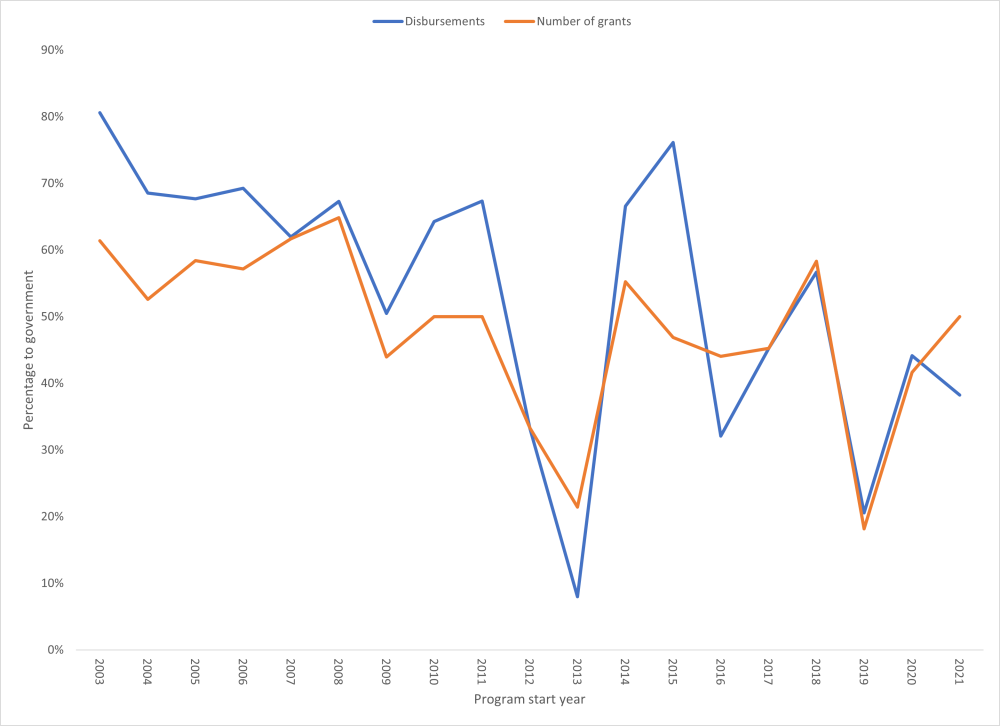Ever since the Pandemic Fund was announced last year, there has been heated debate about through which international organization the funds for pandemic preparedness should be disbursed. Many have argued for channeling funds through the Global Fund to Fight Aids, Tuberculosis, and Malaria.
At its heart is a debate about the fundamental nature of the global health aid architecture and whether global health should be “vertical” or “horizontal.” Should we rely on vertical disease-specific programs, as has been standard in global health in the last twenty years? Or should we seek new approaches to strengthen integrated horizontal systems addressing multiple concerns, including pandemic preparedness?
The rationale for the placement of the Pandemic Fund in the World Bank as a Financial Intermediary Fund (FIF) was the World Bank’s track record of holding multiple FIFs including the Global Environment Facility, the Global Fund, and others. By permitting up to 13 implementing agencies to receive the funds, the Fund has been agnostic as to which agency would be best placed to implement the funds—hence the debate.
What is pandemic preparedness?
Respiratory infections of pandemic potential are core business for public financing, within the remit of a government’s authority and responsibility for compliance with the International Health Regulations. Investing in pandemic preparedness thus requires governments rather than external sources paying for recurrent costs such as staffing. Government financing is core to both public health and the pursuit of universal health coverage.
It is the Pandemic Fund’s role to first agree on key principles. Should pandemic preparedness be integrated with core health system functions? What is its position on sustainability, country ownership, and localization? How will the Fund prevent the dilemma facing vertical global health initiatives, which seek to transfer ownership of nongovernmental systems to local organizations?
Which implementing agencies are best, and for what?
With scarce dollars for pandemic preparedness, the Fund should be clear on the competitive advantages of each implementing agency.
Vertical global health agencies are skilled in pooled procurement of certain health products and delivery aspects, but their public investment in preparedness and health systems is less obvious. For example, the Global Fund is well known for supporting nongovernmental organizations. From our analyses, its share of disbursements to governmental organizations has been declining, from 80 percent in 2003 to now 40 percent of all disbursements in 2021 (Figure 1), with little evidence to show for system-wide impacts. Its mandate is restricted to three diseases, and it lacks a mandate to work through government (‘on-budget’) for pandemics. Its record for enhancing financial sustainability is lacking. Pandemic preparedness may be overshadowed by “the big three” diseases.
Figure 1. Percentage of Global Fund disbursements and grants to government, 2003-2021

Notes: Authors’ analyses of Global Fund grant agreements database. Authors downloaded publicly available comprehensive information regarding the Global Fund’s grant portfolio on October 4, 2022. The Global Fund grant agreements database for the period 2002-2022 covers 1532 grants to 404 principal recipients, representing US$56.7 billion in disbursements. The grant disbursement database classifies principal recipients by type of organization: civil society, government, multilateral, private sector, or not labelled.
What are alternative agencies for a horizontal approach to health systems? Investing in health systems is the core business of multilateral development banks (MDBs), such as the World Bank and regional development banks, which invest in country governments for a given sector, such as health. MDBs have a long-standing track record of supporting horizontal as well as diagonal approaches that deliver a set of highly cost-effective interventions.
As the Pandemic Fund evolves its criteria for funding, countries may choose different implementing agencies. But it is important to recognize that several global health initiatives err towards the vertical rather than the horizontal. After two decades of vertical global health initiatives, how will the Pandemic Fund avoid reinforcing vertical tendencies? Instead, the Pandemic Fund offers an opportunity to allow countries to create explicit priorities and pathways to rethink global health and pandemic preparedness towards the horizontal.
With thanks to Amanda Glassman and Jaime Sepúlveda for helpful comments.
CGD blog posts reflect the views of the authors, drawing on prior research and experience in their areas of expertise.
CGD is a nonpartisan, independent organization and does not take institutional positions.








